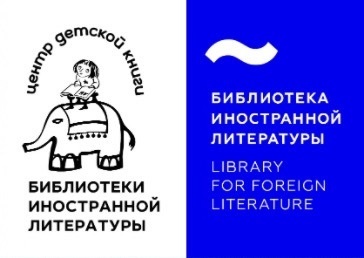кадр истории
Предлагаем вам ознакомиться с работами финалистов межрегионального творческого конкурса иллюстрированных эссе на иностранном языке.
Конкурс был приурочен к 350-летию со дня рождения Петра Первого.
Участникам в возрасте от 12 до 20 лет предлагалось провести самостоятельное исследование о посещении Петром Первым их родного города и написать по итогам короткое эссе: описать конкретное событие, место, здание, исторический документ, дополнив текст информативной иллюстрацией.
На финальный этап конкурса прошло 45 работ на английском, немецком и китайском языках. В конкурсе приняли участие 9 библиотек из 7 регионов, что позволило привлечь широкую аудиторию.
Координаторами первого этапа конкурса на местах выступили:
· Рязанская областная детская библиотека
· Национальная библиотека Республики Карелия
· Архангельская областная научная библиотека им. Н. А. Добролюбова
· Вологодская областная универсальная научная библиотека имени И. В. Бабушкина
· Межпоселенческая центральная детская библиотека п. Сосновское, Нижегородская обл.
· Нижегородская государственная областная детская библиотека им. Т. А. Мавриной
· Донская государственная публичная библиотека, г. Ростов-на-Дону
· Областная универсальная научная библиотека, г. Саратов
· Областная библиотека для детей и юношества им. А.С. Пушкина г. Саратов
(14 лет)
Peter I in Vologda
For the first time, Peter I arrived in Vologda on May 4 1692. He was on Lake Kubenskoye, but he did not quite like it because of the shallows and the lake seemed small to him. In the future, a year later, on July 6, he was in Vologda for 3 days, just the city was on its way to the White Sea. The next time, a year later again, Peter arrived with a retinue. As we know, he also spent three days in Vologda, visiting Kozlenskaya Sloboda. He was very pleased with the perfect work of the Vologda craftsmen who twisted the ropes very well.The fourth visit was in mid-May 1702 at the height of the Northern War. Peter I again passes through Vologda to Arkhangelsk. The king is very worried about the possible attack of the Swedes on Arkhangelsk from the White Sea. By his arrival, more than three hundred ships had been built for "fusing military shells and military men to Arkhangelsk."
Peter's penult visit to Vologda was in March 1724, when he and his wife Ekaterina Alekseevna were passing through the city on their way from the Olonets healing waters. But the arrival, which was not immediately found out, was in 1722. It turned out from the book of 1861 "Letters from Russian sovereigns and other persons of the royal family." The book contained a letter from Peter to his wife Ekaterina, where he wrote that everything was fine with him and that he would arrive on February 10!
Whenever Peter I came to Vologda, he stayed in his house. Not big, not great, with one floor. The house fits into one of the three types of buildings by Domenico Trezzini. He came all six times to Vologda and lived there. The place is quite popular as well as among visitors, so it is known to the residents of the city itself. Previously, the house remained in oblivion and served as a warehouse for flax and tow, but now it is a small museum that anyone can visit.

(14 лет)
The Memorial Museum of Peter I
The house where Peter I stayed during his visits to Vologda.
Truth or myth?
I live in one of the oldest cities in Russia, Vologda. It was founded in 1147. Vologda is known by the names of many great people: writers, poets, scientists, cosmonauts, military leaders. But one of the brightest personalities in the history of Russia who visited Vologda is the great emperor Peter I. The proof of this is a one-story building similar to an ancient casket. The townspeople in the 18th century called it the Petrovsky house. But there are people, mostly guests of the city, who doubt that Peter I stayed overnight in this modest house. I believe that historical facts prove the stay of Peter the Great in Vologda and this house. It is clear that, in the time of Peter the Great, the Vologda River was strategically important in the navigation and shipbuilding of Russia. The importance of the river was the reason that Peter I often visited its banks. Before the appearance of the "Window to Europe", trade with the West is carried out through the North. Moscow and Arkhangelsk were connected by the Vologda River. Therefore, many foreign merchants opened representative offices or settled in Vologda. Among the Vologda residents of foreign origin were the Dutch brothers Ivan and Adolf Goutmann. When visiting Vologda, Peter I always stayed in their small house located on the bank of the Vologda River. Although, looking at this modest and almost obscure house at first glance, it is hard to believe it. In addition, I must say that at the turn of the 17th and 18th centuries, Vologda was already a large city, and the local authorities could offer more comfortable residence for the emperor to live. But for some reason Goutmann`s house was dearer to the emperor than any chambers.According to historical facts, Peter I and the Goutmanns met in Holland, where the tsar went to study shipbuilding under the name of Peter Mikhailov. It is known that Peter I was forced to borrow money without calculating the funds. The Goutmanns rendered him this service. Probably, those visits at the Vologda Goutmann`s house were Peter's return gratitude for their help.
But in 1731 the Dutch merchants left Vologda forever. The "Peter's house" was remembered only in 1872. In 1885, the first Vologda Museum was opened within its walls. The exterior of the house is designed in a rather plain style. The small windows of the house are strengthened with iron bars and decorated with stone plat bands. Above the entrance door there is a stone plaque with the Dutch coat of arms and the date «1704» - the signs testifying to the fact that the owner of the house was his country`s official representative in Vologda.
On entering a small hall visitors see Peter I`s portrait, other exhibits conjure up the atmosphere and images characteristic of Peter I`s epoch. Having visited the museum, no one doubts the authenticity of the fact about Peter I's stay in Vologda. The particular historical significance of the museum is also the fact that it keeps the memory of Peter I, Russia`s greatest reformer.

(13 лет)
Initially, the house had many rooms and outbuildings, but numerous fires destroyed them. Only one stone chamber survived which, as it is assumed, was not the main dwelling but was an office and a trading room.
Several owners changed in the house after the liquidation of the Gutman trading office. In 1872 it was bought by the local nobility and the zemstvo for four thousand roubles. In June 1885 a museum called the Petrovsky House was opened here. At the end of the XIX century the house was reconstructed. The architectural appearance and interior were distorted as a result of not very skillful restoration. Anyway, the main room still represents an interesting example of architecture of the XVII century.
Nowadays, Petrovsky House tells about the life of the region and the city in the first quarter of the XVIII century, about the affairs and everyday life of Vologda residents. It stands on the picturesque elevated bank of the river not far from the pier reminding the stormy days in the history of the Russian state – Peter's time. A square was set up near the museum house in which an old Vologda cannon was installed. Vologda residents and tourists like to walk along Peter's Roads here.

(15 лет)
Peter’s House
People of Vologda used to call this monument "Peter's House". It gives a special charm to the architectural appearance of the ancient town. Its story is just as interesting as the history of Vologda.The house is located on the bank of the Vologda River. Peter I stopped in the house several times during his trips around the North. The sovereign's interest in the Vologda region was due to the trade routes and the fleet. During his visits to Vologda, tsar Peter I watched the development of the fleet, measured the depth of the lakes, he was interested in the crafts of the Vologda residents and the stock of timber suitable for shipbuilding.
The Gutmans settled in Russia in the 17th century. Peter I established wide business relations with their trading house. Above the entrance to the house, a stone plaque depicting the Dutch coat of armsis embedded in the wall. There are letters H, R, S, at the top of the sign, denoting the Dutch Republican States, and at the bottom of the coat of arms there is a ribbon with the year "1704". In 1702, the tsar granted the Gutmans the right to duty-free trade - for the profit that they contributed to the sovereign's treasury by trading pharmaceutical goods. After the Gutmans, the house on the bank of the Vologda was passed from one owner to another several times. The architecture of it was also changed along with its owners. In the 18th century, the voivodship office was located in the house. After the fire in 1773, the house fell into disrepair. In 1872, the authorities created the first memorial museum in the region and Vologda in it!
Vologda is one of the few towns in Russia where the Petrovsky house-museum exists. The northern town and its people keep the memory of Peter I as a major statesman, commander and reformer of Russia.

(18 лет)
Semantron of Petrine Time
Semantron (“bilo” in Russian) is one of the most ancient and simple but powerful music instruments. In the House of Peter I, the first museum of Vologda, there is a cast-iron semantron made in 1706. An interesting story is connected with this exhibit and its origin.Semantrons of various types were widely used in monasteries and cities. They were made of metal, wood and even stone, especially in the areas that had no other material but stone. The Russian name of the semantron – bilo – comes from the root of the Old Russian word “beat”. The sound is made with beating a stick or a special hammer on the flat surface of the bilo.
The wooden semantron was a plank made of maple, ash-tree, beech, or birch. Depending on its shape, size and material, which could vary, the instrument gave different sounds. Metal semantrons (known since the 6th century) were made of iron, copper, cast iron, and bell bronze. Stone semantrons were used in the Solovetsky Monastery in the 15th century.
At the beginning of the reign of Peter I, cannons were made of copper, but there was a lack of it. Peter the Great issued a decree in accordance with which the fourth part of all bells in Russia was to be melted down to make up the deficiency of the Russian artillery.
Archbishop Garviil of Vologda sent about 1,000 poods of bell metal to Moscow, and the tsar, delighted with such a donation, awarded him an esteem certificate. Cast-iron beaters were made for the bell towers instead of the lost bells because services couldn’t be conducted in the churches without bell-ringing. Thus, the cast-iron semantron that is exhibited in the House of Peter I appeared in Vologda.

(12 лет)
Firstly, the exact number of visits to Vologda by Peter I is unknown. It was previously believed that there were only five of them, now the number seven sounds in some sources. Nevertheless, these visits imposed their imprint on the old town. For example, one of the popular architectural monuments is the House of Peter. It is located on the bank of the river Vologda, in a quiet cozy place. I have never been to this museum, but I have drawn it and read about it in various sources. It is known that almost three hundred years have passed since that visit. In the House-Museum of Peter I you can still see unique things related to his name, these are the clothes of the emperor, and the glass cup of Alexander Menshikov, and interior items. Here you can also get acquainted with the historical reference to the Petrovsky house, as well as see numerous photographs of the museum and the square, taken more than a century ago. Here is just a small selection of photographic materials from the museum and modern pictures of the Petrovsky house and the square near it. The collection of orders and commemorative medals is extremely interesting. Among them: an award-winning enamel portrait of Peter the Great, decorated with precious stones; Order of St. Andrew the First-Called and other medals.
Secondly, it is interesting to know that with a height of 2 meters 4 centimeters Peter possessed disproportionately small legs and a narrow chest. It is enough to look at Peter's clothes presented in the museum. Looking at the costume of the statesman, many museum visitors are surprised that the emperor was rather slim.
However, it has been proved, if during a visit to Vologda in March 1724, Peter I and his wife did not stay in the house of the "foreign woman Goutmansha", then there would be no museum in honor of the emperor, and the Vologda Museum - the reserve would not celebrate its 135th anniversary in 2020. After all, the history of the museum-reserve began.
In conclusion, I would like to say that I am proud of living in thetown where there is such asignificant monument of architecture. I will definitely visit this unusual place and continue studying the history of my native town because it is so interesting and informative.

(19 лет)
The Great Peter and his house
Vologda is a small town founded in the 12th century.Vologda is located on the river of the same name . At the moment, about 300 thousand people live in the town.The history of the town began in 1147.At the end of the 17th – beginning of the 18th century , the Great Peter I repeatedly came to Vologda .Peter the Great built ships in Vologda to deliver cargo from Arkhangelsk. From here, in 1702, the Vologda flotilla began its route to Noteburg. Peter the Great led the siege of the Swedish fortress of Shlisselburg. The victory over the Swedes opened the way for Russia to the Baltic Sea. With the advent of St. Petersburg, Vologda lost its former importance as an international trade center.
In memory of Peter the Great, the house of the Dutch trader Goatman has been preserved in the city. The emperor stayed there.
In the 17th century Vologda was an important trade center. For convenience, foreign merchants bought houses in a provincial town, seeking to locate their possessions closer to the pier. So did Johann Gutmann.
It is known that since 1654 he was the Dutch consul for trade affairs in Russia. The guest house of Gutmanov belongs to the monuments of architecture of the 17th century. Similar structures were intended for secondary streets of the city . Once the Gutmans rescued Peter, who found himself in Holland without funds. For this, Peter the Great thanked them with a letter giving considerable privileges.
The house is interesting as a place associated with the stay of Peter I in Vologda. In 1724, Peter and his wife Ekaterina Alekseevna were in Vologda for the last time. They stayed with the Gutmans for two days. The sovereign accompanied his wife to Moscow for the wedding.
The owners of the house were changing. For a long time this house served as a warehouse.
The one-story building with a checkered roof is still popular with local and foreign tourists.Not far from the museum building there is a historical monument – a cast-iron cannon, a cannon of the Peter the Great era, cast at the Shuisky Arms Factory in Karelia. This is one of the earliest Vologda monuments, installed at the Petrovsky House back in 1885.
Today, the doors of the Peter I House-Museum are open to everyone who is interested in the era and personality of the first Russian emperor. It is popular with young and adult tourists. The main excursions of the museum are devoted to Peter's reformatory activities, the Northern War.

(16 лет)
Peter the Great in Vologda
Vologda is considered to have been visited by Peter the Great six times. The sovereign was interested in our city because international trade routes went through it. The Vologda masters took the active part in the construction of the Russian fleet. They equipped ships with sails, ropes, anchors and built boats and barges for the tsar's campaigns from Vologda to Arkhangelsk and further to Western Europe.When the Northern War began Vologda became a close rear and a base for the supply of the Russian army. Two steel factories were built in our region to cast cannon and cannonballs. Due to the lack of bronze, Peter I even issued a decree on melting of bell copper into cannons.
There is a story connected with the Vologda bells. One of Peter's visits to Vologda coincided with his birthday. The Russian tsar was 30 years old. The celebration took place in the magnificent Krestovaya Palata of the Simonovsky Building of the Vologda Bishop's Courtyard (now it is the territory of the Vologda Kremlin). The guests were treated to a variety of dishes: geese, red and black caviar, fish, corned beef, wine and many other delicious things. Suddenly, during the luxurious feast, the Emperor heard a bell ringing. The angry tsar wondered why his order had not been carried out. To save the bells, the local bell ringer, the Lame Ivashka, climbed the bell tower by many steps, and played the bells. He performed a favourite Peter’s music "Kamarinskaya". Peter the Great was so impressed by the bell ringer's abilities that he let all the bells leave as a reward.
But this is a legend, of course. Anyway, not a single bell was removed from the Sofia Belfry for military needs.
To follow the tsar's order, The Vologda Bishop Gavriil sent not only the required bell copper, but also 200 poods from the reserves of the bishop's treasury to the casting yard in Moscow. The sovereign, delighted with such a generous donation, sent a certificate of commendation to Gavriil. Moreover, Peter I also ordered Ivan Motorin, who had created the Tsar Bell, to cast two bells for the Vologda bell tower. And two years later, the citizens of Vologda received two bells – Bolshaya Lebed weighing about three tons and Malaya Lebed weighing 400 kg. Nowadays citizens and visitors of the city can still admire these bells on the Sofia Belfry.

(17 лет)
Reception of Peter I in Cross Chamber
2022 marks the 350th anniversary of the birth of Peter the Great and the 320th anniversary of his visit to Vologda in 1702.It is considered that Peter I came to the Vologda region 6 times and during three visits he was received in the Cross Chamber of the Archbishop’s Residence.
The Archbishop’s Residence, known as the Vologda Kremlin now, consists of churches, chambers, household structures and walls. The first stone chambers - Simon Building - were named after Archbishop Simon under whom they were constructed in the 17th century.
It was a three-storeyed structure with cells, a small house church and formal rooms. But the building was famous for the Cross Chamber used as a ceremonial reception room. It was an enormous hall with a vaulted ceiling, beautiful icons and a copper chandelier.
In the Cross Chamber the archbishops of Vologda received noble guests, including Peter I.
In May 1702, the tsar came to Vologda at the heigh of the Great Northern War. He stayed there only several days and then left for Archangelsk. Peter I worried about a possible attack of the Swedes on the White Sea port.
Over 300 ships had been built in Vologda by his arrival. They were to carry soldiers and arms to Archangelsk along northern rivers and lakes.
Peter I was given a great reception by Archbishop Garviil in the Cross Chamber. To dine and wine the tsar, fishermen were sent to the Sheksna River and Lake Kubenskoye to catch sterlet, white salmon and whitefish. Besides, fresh local cucumbers and mushrooms were served.
At present the Cross Chamber is an exhibition hall of the Vologda State Museum-Preserve for History, Architecture and Art. Soon, after its restoration, a new exhibition about Peter I will be opened there.

(17 лет)
Jacket of Peter I
Peter I is one of the most significant figures in the Russian history. A lot of different decrees were issued during his reign.It is worth noting that one of them changed fashion in Russia and introduced the rules for wearing European-style clothing.
The decree “On wearing clothes in the Hungarian manner” was issued on January 14, 1700.
Firstly, men were to wear a caftan clinging tightly to the figure, a jacket, knee pants, long stockings and buckle shoes. They were to have a white wig or powdered hair. Besides, the noblemen had to cut their beards.
Secondly, according to the new fashion, women began to wear a low-necked dress with a close-fitting bodice and a wide skirt.
By the way, in Vologda, where I live, there is a memorial house of Peter the Great. The emperor stayed in this building when he visited the city.
As far as I know, there are about 100 exhibits dating back to the reign of Peter I. Visitors can see emperor’s clothes, a copy of his death mask, two Dutch chairs with the date 1704, “zertsalo” (a trihedral prism with a two-headed eagle on the top and three Petrine decrees on its three sides), and some others.
To tell the truth, I was amazed at the jacket of Peter the Great displayed at the museum. It was handed over to the Vologda Local Lore Museum by the State Hermitage in 1955.
This exhibit is certainly unique. The white knee-length jacket with flaring and stiffened skirts (also called “just au corps”) was made in Zaandam, Holland. Probably Peter I bought the jacket when he lived in Holland in 1697 working as a carpenter at a local shipyard.
In conclusion, I can say that Peter I really changed the view of the fashion in Russia in the 18th century. Thus, he became the most striking and memorable figure among the rulers of our country.

(13 лет)
Peters historischer Besuch
Mit dem Blick auf die Betriebe des zukünftigen Petrosawodsks fühlte sich Peter ein bisschen traurig. Es war das erste Mal, als er in dem Petrowsky Betrieb war. Peter hatte eine gewisse Absicht im nächsten Frühling für eine Woche zurückzukehren. Er begann einen Plan für seine Rückkehr zu erstellen. Der Plan von Peter dem Großen war deutlich:„Am ersten Tag überprüfe ich alle Räume im gebauten Königshaus. Wir brauchen ein Schlafzimmer, eine Dreherei mit einer Eingangshalle, ein Schlafzimmer für Kaiserin Katerina mit einem Badezimmer, einen Gebetsraum, eine Halle mit zwei Kammern, einen Baderaum mit zwei Latrinen, ein Brotzimmer und eine Küche im Erdgeschoss. Im Obergeschoss müssen zwei Weinkeller, noch eine Halle mit zwei Kammern und ein Verbindungsraum sein. Das Möbel muss unbedingt baumfest sein. Am zweiten Tag gehe ich in den Park spazieren, wo ich einige Bäume gepflanzt habe: Birken, Eschen, Ahorne, und schaue, ob sie Wurzeln geschlagen haben. Den ganzen dritten Tag gehe ich durch alle Betriebe und die Hammerschmiede, kontrolliere die Werkstätten und arbeite selbst. Am vierten Tag ruhe ich mich aus und kümmere mich um meine Gesundheit. Aber am nächsten Tag gehe ich wieder zu den Betrieben. Zum Abendessen gibt es Huhn, Eier, Quark, Wild, Fisch, Butter auf dem fürstlichen Tisch. Alle Produkte müssen einheimische Bauern aus dem Schujsky Kirchhof und Olonets, Altgläubige aus der Wygowskaja Wüste und Mönche des Alexander-Swirsky-Klosters liefern. Bei meiner Ankunft muss der Bürgermeister von Olonets, Timofej Balaschow, zehn beste Kälber und ebenso viele Lämmer querlegen. Dann spielen wir Biryulki und Schach in der Halle unten.
Am Samstagsmorgen höre ich Liturgie, dann fahre ich von den Betrieben zum Brunnen... ”

(17 лет)
Legends about Peter I in Karelia
Peter the Great visited Karelia, wonderful land of endless forests and blue lakes, at least 7 times in his life. For all the time spent in our land, the Tsar, if I may say, had woken up Karelia with his reforms and changes. Such a significant figure in our history could not but leave a lot of myths and tales behind.There are many legends around Peter's stay in Karelia. One of them says that in the village Sumposad there is a boat, made on metal nails, which, was created by Peter I himself. Visiting this place, you can find this boat in the local museum.
According to another myth, upon arrival in the village named Nyukhcha, the Tsar demanded a hut where no one older than him lived. Locals were surprised and decided to take him to the house, where a young family lived. A baby was crying inside. Then Peter said: “Here he is, older than me. He can order me, but I can’t order him!” The Tsar liked the child and became his godfather.
A frequent place of stay of Peter the Great in the 20s, where even several palaces were built, was the martial waters. The legend says that a factory worker Ivan Ryabojev, who suffered from heartache, discovered a non-freezing spring, which brought him relief: “he drank for three days in a row and was healed”. After this he was released from any works or taxes on the copper-smelting plants by Peter I himself for his find.
People say, that when the Tsar enjoyed his stay in Martial waters, he drank 20 or even 30 glasses of medicinal mineral water and sometimes even mixed it with local liqueurs. Those are probably just myths, but who really knows now.
Peter Alekseevich indeed turned our lives upside down and created a lot of mystery around our land. So, it is our mission to unravel hidden secrets of our history and do not forget about our founder.

(13 лет)
A tale about the royal dog Zhanetka and the girl Aina
Tsar Peter I came to our Onega region more than once or twice. And he paved the road here, and built a factory, and was treated at the resort.And then one day the great tsar Peter did not come alone, there was a dog with him, named not in our way - Zhanetka . We have never seen such dogs! It was small with crooked paws, a flat muzzle! The tsar did not take her to his campaigns, Zhanetka lay on a velvet cushion like a noble lady , and Peter himself fed her from his royal table.
And then one day the dog disappeared! The gatman didn't lock the door and missed the dog. They searched everywhere, as if she had fallen through the ground! The qatman already began to stutter – he understood that the tsar would execute him! We've been looking for a pet for two nights!
On the third night, a girl Aina by name, came from a distant village. She brought Janette. The dog was with a wounded paw, with a skinned ear! Aina said that she had recaptured Zhanetka from the stray dogs. The tsar got emotional, rewarded the girl, and assigned a doctor to the dog. The doctor gave Zhanetka local healing water to drink, and smeared her wounds with overseas ointment.
That could be the end of the story, but no. On the third night, Zhanetka disappeared again. The gatman's eye was already twitching. The tsar was very angry!
And two days later Aina come with a dog. The tsar couldn't believe his eyes!
He sat down on the bench and asked:
- What does it mean, Zhanet, have you chosen another owner for yourself? Don't you like the royal house?
Zhanetka , of course, is silent. Peter waved his hand:
- Then let it be ! You've chosen your own destiny! Stay on the land of Onega!
And he sent the girl and the dog back to the distant village. He also gave them a bag of goodies.
Aina and Zhanetka lived happily ever after. Zhanette's puppies were call either "tsar's", or "Petrovs". The story about the royal dog Zhanetka Aina was told by her to her grandchildren, and by them to their grandchildren. Whether it's a true story or a fairy tale, no one knows for sure.

(15 лет)
However, it is important to us that Peter the Great founded Petrovskaya Sloboda, which was renamed as Petrozavodsk later. He also spent a lot of time in our region.
There are some legends that are associated with Peter the Great. I know one, and it is related to our republic. Peter was travelling in the lands where Karelia is located now with his crew. On the way he fell asleep, and when he woke up, he understood that they had already arrived in a settlement. He was told that it was the village of Selga, and the ruler exclaimed: "Uzhe (already) Selga?" The village has been called Uzeselga ever since.
Peter the Great, as mentioned earlier, was a founder of Petrozavodsk. Therefore, a monument to this great person was erected on the Embankment of the capital of Karelia. According to the legend, he points with his hand to the place where the Peter’s plant used to stand.
In addition, Peter the First was an important figure all over the world and that is why monuments in the honor of him can be found in other countries such as the United States of America, Belgium, Great Britain, the Netherlands, Latvia.
Thanks to Peter the Great Russia had reached a new level of life and development. He was the man, who was worthy of making up legends and building the monuments.

(17 лет)
Peter`s thoughts
The history began more than 300 years ago when Peter the First founded the glorious city of Petrozavodsk. Was Peter in our area? Let our imagination flow.The crew slowly stepped through coniferous forests, dousing travelers with a pleasant aroma. An elderly emperor looked out of the carriage, examining nature around him. The sun peeking out of the clouds softly illuminated the path and slender pines provided cool shade. Suddenly, Onego appeared from behind branches. “What a miracle» -- Peter thought admiringly. « In these woods we can lead a calm life on the shore of this lake». The emperor ordered to drive up to the water. Leaning on a cane, he slowly approached the lake. «Wonderful edge. If you ennoble the coast here, cut down pines and birches and build a high road to the factory, then a glorious city will emerge». The emperor looked thoughtfully. «It would be nice to build a large port here. It`ll be convenient to transport wood and stones». Peter ordered the coachman: «Send for builders and artisans to build a house on this shore. I will admire glorious Onego and think how to build a glorious city here! » In two weeks, the job was done. A small blue wooden house harmonized with the sky-blue lake. Peter generously rewarded the builders with gold and checked the building. The boards were impregnated with resin, which had a beneficial effect on the lungs of the elderly emperor. Large windows looked out directly towards the mighty lake and forest. Leaning on the windowsill, Peter continued to dream: «To lay the road, to instruct peasants to build houses and ennoble the coast. Establish a port. Or maybe put a palace with a theater in the center of the road, that will be a consolation for noblemen who are in these parts! »
Who knows maybe this story is not fiction?

(20 лет)
The monument erected man-made...
On the verge of perception, measured beats are heard. The bell, the bellow of the cannon... no, it’s the blows of a chisel on a stone. Gradually, day after day, sunlight is breaking through the darkness. The roar of the streets, the hubbub of workers and this unbearable clinking of coins somewhere below. It is all hammering like an intolerable itching in the head, but there are no hands to relieve it, nor the head itself. There is only a lightening void… The ringing void is replaced by the searing heat. It is as if the sun is flowing through me, leaving its bright golden streams on the skin. There now, the legs have gained their former strength, and the chest in the uniform caftan is no longer tightened by the odd band. The hands can again feel the tension of the muscles and the touch of coarse cloth. The shell is being broken by the heart beats; the sunlight is hitting the eyes that have long grown unaccustomed to it. I am back on the Russian land. The hubbub of the crowd and enthusiastic shouts are being heard from the food stalls. The wind off the lake is carrying ashore the squawking of seagulls and the horns of ships. It is so good to be back home! Again, the roar, the endless hum of people. One can hear from everywhere, “War! War!” Children’s laughter is no longer heard; more and more often, people are moving on crutches or even in wheelchairs. The red wave is covering their minds, spilling over the dam of patience and crashing the old regime. “For the Revolution!” people with scarlet bandages on their hands are shouting. The wave is sweeping me away, too. The sword is broken, arms and legs are crippled, and all that remains of my second birth is resting in a shady courtyard among the metal debris. Winters pass, and so do rainy autumns, as if nature is crying over those killed in the muzzle of wars. However, a sunny day also comes, people thaw out from the troubles suffered and recall their origins. That is how they found me at the back of the museum. They washed me of the stuck leaves, tore off the grass entangled in the hair, and re-erected me over the city again. There was a church behind me, the only one familiar to the eye, and even that one without a cross. How this world has changed, how the people in it have changed… Another war died down; the Finns came to this city as invaders but did not stay for long. The sky is shining again, the buckles on school uniforms of children running to school are shining again. I have been transported to the shore of the lake. It felt then as if I were back in those old days when dense forests stretched out here, and my subjects were equipping the first workshops of the plant. A faithful sword is lying in the hand, the wind is ruffling bronze curls, and an unknown path is awaiting ahead. However, once a year, He is covered by a sailor’s jacket which local graduates put on the Tsar. Well, even the Tsar can have a good time sometimes. Standing still is very tiring, and these antics prevent one from sinking into the eternal sleep of the mind.

(15 лет)
Peter the Great
For the inhabitants of Karelia, including me, the personality of Peter I is significant. The history of the Karelia is inextricably linked with the name of the founder of Petrozavodsk.The first Russian Emperor spent a total of two weeks at the Petrovsky Factory. Historian Alexander Pashkov considered that Peter came to the Lososinka mouth seven times in the last years of his life. Mineral springs helped him. There are four known visits of the emperor to Martial Waters.
There are legends around Peter's stay in Petrovsky Sloboda. According to them, Peter communicated closely with the holy fool Thaddeus, a saint who lived in the forest. Peter let him into his palace. In 1724, their last meeting took place, during which Thaddeus predicted the imminent death of the emperor. At first, Peter got angry and ordered to imprison the holy fool. Later Peter realized that the words of the elder were a prophecy. The emperor sent a letter with a request to release Thaddeus and assign him a lifelong pension.
When Peter came to Petrovsky Sloboda for the first time in 1719, he had nowhere to stay. The next year, they built a wooden palace.
The palace is full of secrets. Until now, it is impossible to say exactly when it was built, who was its architect, there are no drawings and documents about the beginning of construction. You can't even tell what it looked like.
Walking along the embankment of Onega, I often involuntarily wonder where this house could be. Once, having reached the monument to Peter the Great, I looked into his eyes and realized that everything is simple: for curious people like me, Peter points to the place where his house was built, with his right hand. Peter enjoyed the view of Onega and the pier from the window of the palace.

(19 лет)
Karelian Birch Remembers
Karelia and Petrozavodsk are the northern edge of our homeland. Here, in 1703, Emperor Peter I founded a settlement – Petrovskaya Sloboda, and later the settlement received the status of a city bearing the Tsar’s name Peter – Petrozavodsk. Many events have happened since that moment – victories and defeats in wars, great happiness and no less great grief, triumph and fall. Can anyone now boast of having seen and felt all this? I don’t think so. But who is to stop us from dreaming a bit and adding a little fantasy to this essay? I invite you to dream a little and to reflect on who could tell us about our Karelian homeland, about this harsh but extraordinarily beautiful region of the era of Peter the Great? I know what you are thinking about – yes, they are, of course, trees. But which ones? The birch is my answer, and not just any birch but Karelian birch! The very birch that Vsevolod Rozhdestvensky wrote about in his poem:
It is standing here on the edge,
Above the wavelets of forgotten lakes,
Stretching out clumsy hands
Into the waving heat of expanse.
According to scientists, provided the conditions are favourable, some birch trees can live for more than 300 years! I am sure there is such a birch in our city. The birch that grew on the bank of the Lososinka river, not far from Lake Onego. I am sure it saw Peter’s times. It saw him; Emperor Peter pointed toward that birch saying, “There will be gun plants here, Petrovskaya Sloboda will be here!” Indeed, there used to be plants, and the manufactured guns served for the benefit of our state. The birch remembers him standing nearby and pondering on his power. This reminds us of an excerpt from Leo Tolstoy’s “War and Peace” that describes the meeting of Andrey Bolkonsky with an oak. Peter looked at our heroine – the birch; it was full of strength, growing gradually, like our Russia, getting stronger and stronger. A little later, in 1719, Peter I founded Marcial Waters, the first health resort in Russia, and the birch knows about it. Peter started coming to Karelia in the last years of his life when he was already ill – the administration of a great state takes away all the vitality. Mineral springs helped him. The Karelian birch knows a lot – for example, it knows the place where the Tsar’s wooden palace was built – but it remains silent. Will the Karelian birch share its secret? I cannot say for sure. Sooner or later, the whole truth will out. The birch saw, felt, and heard a lot more – it saw Governor Derzhavin who was walking around and drawing inspiration for his poetry while looking at our beautiful nature. It felt a cold and moist wind blowing from the large Onego Lake. It heard the bells of Kizhi churches and Valaam Monastery ringing.Nevertheless, no matter what secrets the Karelian birch keeps, we must keep the knowledge we have about our native land – Karelia. I would like to end my essay with a quote by Mikhail Vasilyevich Lomonosov, “A nation that does not know its past has no future.”

(16 лет)
My childhood
You know, in my life I have been called Onega Tractor, Onega Metallurgical and Mechanical, even Alexander Cannon Foundry. But I prefer the name given by father, Pyotr Alekseevich, Shuisky Arms Factory. I appeared at a difficult time, on September 1, 1703, after all, there was a war. My father had high hopes for me. I want to note I am not the youngest in the family. Our youngest, the Konchezersky factory, was still in diapers when my elders and I worked day and night. In addition to my father, I also had my personal trainer - Alexander Menshikov. From the moment I was born, he made sure I developed properly, grew and became stronger. My first friend was YakovVlasov. I still remember our feelings when my baby (the first cannon, my girl) showed herself in 1704. The only thing, it seems to me, I was too much patronized. Ever since I was born, I've been surrounded by guns guarding me.To see me more often, my father built a palace nearby, laid out a garden. There was also Peter and Paul Church, but I didn't like it. It was so clean, the top shines, but in fact useless. By the age of 3, I became very popular, there were hundred people around me. Tula and Ural artisans and peasants assigned to me,wanted to work here. They said I was even able to create a city. I didn't even try to do it. What a good fellow I am after all)
Thanks to my efforts, I became one of the largest metallurgical plants. People came from Europe; my father was proud. Despite my many children: cannons, cannonballs, firearms, anchors and shipboard equipment, I still have the first cannon in my heart.
In 1713, Georg Wilhelm de Gennini was assigned to me. An evil man, not an ounce of kindness. He was squeezing all the juice out of me. Yes, he revealed my full potential, but we didn't have mutual understanding. He was cruel. Fortunately, the war was over and I could rest.
This is a story of my youth. I'll tell you about other moments of my life later.


(12 лет)
The thing that needs to be said, Peter Alekseevich stayed at the house of the merchant Yefim Chatygin. In 1890, the first historical museum in Nizhny Novgorod, named Petrovskiy, was organized in this house.
In my opinion, the creation of the historical museum helped not only to strengthen the ties of the epochs, but also became the beginning of a more detailed study of Peter's personality and his influence on the development of Nizhny Novgorod during visits.
27 years later, on May 26, in 1722, in the morning, Nizhny Novgorod’s residents stood by the river waiting for the arrival of Emperor Peter I in the city, and everyone wanted to look at the amazing tsar and the magnificent caravan.
During this visit, the tsar was met by Bishop Pitirim, Intendant Potemkin and Governor Rzhevskiy. The circumstances of Peter I's visit to Nizhny Novgorod in May 1722 are quite understandable: the city was not only on the route of the tsar during his journey tothe Caspian Sea, but also was the main rear base of the Russian army, providing it with equipment and provisions. Therefore, Peter I wished to personally inspect the preparation for a military campaign. Unfortunately, the sources covering the stay of Peter I in Nizhny Novgorod on May 27-30, 1722, are few. Among them, a Travel journal of 1722, a reply from Archimandrite Filaret of the Makaryevsky Zheltovodsk Monastery and a record of the New Nizhny Novgorod Chronicler. The travel journal of 1722 reports that Peter I arrived in Nizhny Novgorod on May 26 "at 8 o'clock in the afternoon." The next morning he looked at the ships that are made for the campaign. the Tsar was dissatisfied with the design of these buildings, which did not allow them to go to sea». And he ordered to establish a shipyard in Nizhny Novgorod and to build sea vessels on the Volga, because this city stands in the middle of the great river and at the mouth of the Oka, and therefore trade flows from everywhere to it, as if to the center, and secondly, through these rivers to establish Russian trade with the rich Indian regions there."… And the day before, on April 18, 1722, Peter I signed a decree specifically for the indigenous Volga: "So that the ships from the Bottom, which go to the bottom, be all such that they are suitable for the sea, like Evers and new Romanovs, and so that this board is given to the particular shipyard." According to the historian Solovyov S. M., the goals and objectives pursued by the emperor were correct and noble, but, unfortunately, he did not take into account the Volga shallow water in the mezen, and therefore all his decrees on the construction of naval vessels here had to remain on paper. And only in January in 1723, Peter the Great, realizing his mistake, gave permission to build large Volga vessels at the discretion of industrialists.
One of the important events was that on May 30, Peter the Great celebrated his 50th anniversary, which coincided with the celebration of the 500th anniversary of Nizhny Novgorod. All that day cannon fire was heard in Nizhny Novgorod. The Sovereign listened to the liturgy in the Cathedral of the Transfiguration of the Saviour, where he himself sang in the choir with the choristers and read "The Apostle". After mass, he went down to Minin's tomb and, bowing to the ground, said: "Here is the true deliverer of Russia."
In conclusion, I would like to emphasize thatalthough Peter I's visits to Nizhny Novgorod lasted a week. The term is short, but the tsar's stay made a significant contribution to the development of Nizhny Novgorod, giving impetus to the creation of shipbuilding and river navigation. The former Governor of the Nizhny Novgorod Region, Valery Shantsev, decided to erect a bronze figure of the emperor opposite the Kremlin's Conception Tower. So he showed the townspeople what contribution Peter I made to the development of Nizhny Novgorod. Shantsev timed the opening of the monument to the 300th anniversary of the Nizhny Novgorod province.

The House on Pochainskaya Street
Should we take a stroll down the quiet bystreets of Nizhny Novgorod and follow our path up the Rozhdestvenskaya Street passing the Holy Myrrhbearers Church, we will find ourselves on Pochainsky Boulevard, and then, walking a bit further, finally reach the Zapochainye Side. And this is where we come across the living Russian fairytale – an astonishingly beautiful example of white-stone artisanship worthy of the palaces owned by the prosperous merchants of the past. Standing next to the facade of this two-story building, we notice a memorial sign – a high relief inscribed with “To the Russian Fleet Founder Peter I. 1696 – 1996. People of the Nizhny Novgorod”. It is the oldest house in the city and it was a residence of the Russian merchant Efim Chatygin in the second half of the 17th century. And it was there that according to the legend one bombardier of the Preobrazhensky Life-Guard Regiment who called himself Peter (young monarch Peter I preferred a more European pronunciation to his name) took a stay during the march on Azov in 1695. Let us turn now to the Nizhny Novgorod folklore book “Kuma-Charodeika” as it goes: “Volga (river) was overflowing and our sovereign judged that sailing onward on small boats was perilous and made a decision to put his artillery carried by 40 barges on 9 river lighters. That decision held Peter in Nizhny Novgorod for a week. During his stay the monarch chose toreside at Chatygin’s house on Pochainskaya Street”. Rich-looking place adorned with stone-made dressings and colorful tiles had a massive foundation, thick walls and narrow windows – perfect to accommodate the head of the state and also being close to Volga, Kremlin, local market and ever crowded Pochainskaya Street. “As a part of his concerns, the tsar visited the Chernorechensky boatyard on Oka (river). By his decree the boatyard set out to build wooden vessels suitable for river and sea navigation. (…) The fleet left Nizhny Novgorod on May 22”, - following the book “Nizhegorodskaya Starina” by D. Smirnov. The house saw several owners through its long and rich history. It belonged to the Dokukin merchant family in the 18th century, it served as a history museum in the 19th century, it was a night shelter, it was a property of the Society for Protection of Historical and Cultural Monuments, etc. In order to arrange regional exposition in 1890, the house was renovated by N.P. Ivanov, the architect, at the initiative of historian and ethnographer A.S. Gatsisky. The west side of the building had been furnished with the porch inspired by the architecture of the 17th century. The pillars of the porch were dressed with the tiles previously decorating the ancient Sergievskaya Church. As the exposition was moved to the Dmitrievskaya tower of the Kremlin in 1896, the indoors still served as storage of antiquities. The old photo made by Maksim Dmitriev shows that the north side of the building had a gallery carved to it. There were days when Pochainskaya Street was bustling with tradespeople, for everyone in Nizhny Novgorod was in anticipation of the distinguished guest – townsmen paved streets and procured supplies for Peter’s army. And maybe crowds were gathering to welcome their ruler. But today it is a restful place reminding us of the tales of the old. Let us step closer to the house, close our eyes and imagine: there he was, the great tsar making his way down the stone steps and sharply gazing into the distance – what were his thoughts? Surely, he was thinking of the forthcoming glorious deeds and victories. But for the time, the hard work lay ahead: a week to load the artillery on bigger ships, to repair riverboats, to supply men with provision.
And that week made it into the history of Nizhny Novgorod.
You majesty, our respect to you.

(7 класс)
The House of Peter I
Peter I was the Tsar and the Emperor of All Russia from 1689 to 1725. He was the first Russian tsar to visit European countries, and many cities both there and in Russia. One of the cities that Peter I visited was Nizhny Novgorod.In Nizhny Novgorod, Peter stopped twice. For the first time, when the tsar announced a military campaign in 1695, and, heading along the Volga to Azov, he stopped on the way in a white-stone house, its owner was merchant Efim Chatygin. Peter arrived there within a week. Then this house was called “The House of Peter I”. The second time the emperor visited it 25 years later. He came to Nizhny Novgorod to visit the grave of Kuzma Minin. In those days, it cost more to build a stone house than a wooden one. Such buildings were considered very prestigious, and perhaps that is why the Tsar chose it. Then the house belonged to different people, mostly merchants. The owners have changed several times.
This building stands on a high place at the beginning of the Pochainsky exit, which connects the upper and lower parts of Nizhny Novgorod. From its windows you can see the ancient walls of the Kremlin. Chatygin’s two-storeywhite-stone house looks fascinating from the embankment.
The house of Peter I is one of the oldest monuments of civil architecture in the capital of the Volga region. It gives an idea of the stone residential buildings of the Nizhny Novgorod suburb in the XVII century. The house soon lost its usual appearance after unsuccessful restoration work, but nevertheless it managed to preserve the authentic atmosphere of those times. Now it is an object of cultural heritage.

(16 лет)
The House of Peter I
Peter Alekseevich Romanov is the first Russian emperor who went down in history under the name of Peter the Great. A personality not fully solved by history, but from this no less bright and great. His bold reforms, his great conquests transformed the face of the country. Every Russian certainly remembers the winged Pushkin lines:
Man of the sword, man of the scroll,
As shipmate and as shipwright known,
For with his all-embracing soul
He was a workman on the throne.
Indeed, the sovereign leader of the Russian land was not afraid of any work and did not know any obstacles. Peter the Great spent almost half of his life on the road. Be proud, fellow countrymen! Nizhny Novgorod is included in the list of Russian cities he has visited. Peter the Great visited our city twice. Like all the first, the first visit remained in the memory of contemporaries and descendants. The young tsar appeared on the Volga shores in the spring of 1695. He arrived in the city on the Volga at the head of a large caravan. A whole army descended with him – the Preobrazhensky, Semenovsky and Lefortovsky regiments. They went on 150 boats. Another 40 boats were with artillery and various military supplies. Peter was young. He was only 23 years old. The age of modern students. He was full of strength and daring plans. The great reformer of Russia was preparing for the first great campaign – the conquest of the Turkish fortress of Azov. He was making a way for the Russian people to the sea. Peter already understood at that time that great Russia needed to go out to sea, trade widely and freely, adopt all the best from abroad. As the German philosopher Karl Marx aptly remarked, «no great nation has ever lived and could not live in such a distance from the sea, in which the empire of Peter the Great was located at the beginning…». The townspeople were preparing to meet the tsar: they paved the streets, brewed beer, and stored food for the army. Since medieval Nizhny Novgorod was small, the population of the city was small. The scribal books of 1682 recorded 3,622 households. At that time, wooden buildings prevailed in Nizhny Novgorod, where could the sovereign stay for the night? There is a unique historical territory in Nizhny Novgorod – Zapochainye. Here, among the blocks of a very picturesque development near the Pochaina River, merchant Yefim Chatygin built white stone chambers more than 340 years ago. The exact date of their construction is unknown, presumably they were erected in the 1680s. A new two-storey stone house with a massive foundation, thick walls, vaulted extensive basements, small windows in patterned architraves. The building looked solid, elegant and rich. It was quite consistent with the status of a distinguished guest. Nizhny Novgorod legend says that during the week (May 16-23) tsar Peter I lived in the house of merchant Chatygin. He oversaw the reloading of artillery from small vessels to large ones for further passage down the Volga. The tsar spent part of his time on a trip to the Chernorechensky zaton on the Volga. Here he ordered the construction of wooden vessels suitable for navigation on the river and at sea to begin. The invited masters taught the locals how to build ships. The sovereign wrote from Nizhny Novgorod to Moscow to Prince Caesar Fyodor Yuryevich Romodanovsky, Duma clerk, nobleman Andrei Andreevich Vinius, translator of the Embassy order Andrei Yuryevich Krevet. The tsar complained in letters about the contrary winds that delayed the caravan for many days, lamented the lack of experienced helmsman-masters.
The military flotilla sailed from Nizhny Novgorod on May 23, 1695. The campaign of 1695 ended in failure: Azov was not taken. But this is a completely different story. The oldest residential buildings in the city is still standing. It is known as the chambers of merchant Yefim Chatygin or Peter's House. This is a typical example of Russian stone architecture of the XVII century. The structure has seen a lot in its time: people lived here, wine and beer warehouses were located, tramps lived. In 1890, a historical museum was opened in the house. The chambers have undergone three restorations in their lifetime. The last restoration took place in 2015. On October 20, 1996, Russia celebrated the 300th anniversary of the Russian fleet. At the same time, a memorial sign appeared on the facade of the building – a bronze high relief with the image of Peter I. The authors of the memorial plaque to the founder of the national fleet are the sculptor T.G.Kholueva and the architect A.I.Ulanovsky. The young tsar holds a model of a sailboat in his hand. In the lower part of the high relief there is an inscription: «To the founder of the Russian fleet, Peter I. 1696-1996. Residents of Nizhny Novgorod».
It is a pity that now the seal of desolation lies on the monument of culture. How quickly something that was created by the painstaking work of stonecutters and restorers comes to desolation. While there is still time, take a walk along the old Nizhny Novgorod street. Go to Peter's House, imagine how the tsar carpenter, tsar skipper, bombardier Peter the Great is approaching him with a sweeping step.

(7 класс)
Peter the Great in my city
Peter the First, or Peter the Great (1672-1725), was one of the most outstanding rulers and reformers in Russian history. Peter the First was Tsar of Russia and became Emperor in 1721. During his short life, he was in our town named Nizhny Novgorod twice. His first visit was in May 1695, when he was preparing a military campaign in Azov. The king and his army stopped in Nizhny Novgorod for a week to repair the damaged ships.The townspeople prepared for the royal arrival. A special person was sent in a boat from Nizhny Novgorod to Murom. He had to inform about the approach of the royal caravan to the city. The local government repaired the pier on the Oka with wooden boards and pavements along the streets. According to the order of the king, supplies for the campaign were prepared in large quantities: honey, beer, kvass, beluga, sturgeon, sterlet, pike, pike perch, bream. And other products: meat of bulls, sheep, geese, chickens, ham, butter, sour cream and cottage cheese. Gifts were also prepared for the king: sable furs, silver items and expensive materials. But Peter I refused such expensive gifts, because he did not want to burden the local population. Perhaps the refusal of gifts was due to the fact that the townspeople of Nizhny Novgorod were entrusted with the obligation to build 7 large ships for the campaign at their own expense. These ships were loaded with artillery and supplies. The government of Nizhny Novgorod repaired the ships at its own expense, supplied them with supplies and provided more than 1,500 rowers.
The only problem for the authorities was the deployment of troops and especially the royal retinue during their stay in the city. It is known that Peter I stayed in the stone house of the merchant Efim Chatygin on Pochainskaya Street, 27. It was a two-storey house with two chambers and spacious vaulted cellars, which has survived to this day. This unique architectural monument is called the "House of Peter the First ".
Peter the First played a great part in Russian history. After his death, Russia was much more secure and progressive than it had been before his reign.

(18 лет)
On the first day, Sunday, ruler stayed a liturgy in Kremlin Cathedral. Peter I paid great respect to Kozma Minin, savior of Russian tsardom, who was buried in Nizhny Novgorod as the city’s honoured townsman. Emperor asked citizens about Minin and listened to stories and legends surrounding this man. It is truly remarkable how a simple man from a province town became one of the reasons he, Peter I The Great, stood there as an all-mighty emperor a hundred years after Minin’s death. Peter was the first monarch of Romanov dynasty to visit Nizhny Novgorod. Second day of Peter’s stay coincided with his 50th and Nizhny Novgorod’s 500th birthdays. Everything about that celebration was grandiose. Most of the day was spent by the Emperor in different churches, serving liturgies and other ritual prayers. Celebratory dinner was so great that people stood up from the table much later than it was expected. That same day Peter ordered to build a shipyard in the city. Despite a long day, Emperor was full of energy, so later at night he and his fleet left to Makariev.
It is unknown for modern historians where Peter stayed during his visit. It is known though he did not live in the house he used during his first stop in Nizhny Novgorod in 1695 which is now known as “House of Peter”.
As we can see, Tsar’s stay was not very long; however, it became important for the city’s life. That visit is connected with several social and charity events and deeds, reconstruction of Minin’s grave and construction of a shipyard in Nizhny Novgorod. Because of Peter’s influence city began to develop as a river port and place for building and repairing ships which later served an important role in city’s history.
Every visit of a ruler was important for people who lived in towns, cities and villages. Even if they were short and, seemingly, uneventful, they could give a push for changes and raise the spirit of people worshiping their Emperor. Peter I The Great was an active man craving reforms in his country and Nizhny Novgorod was lucky enough to welcome him twice.

(10 класс)
A Shipbuilder’s Diary Entry
August 2d, 1701
It was boiling hot, yet a cool breeze from the Velikaya River made it a bit comfortable to work. We had loads of work: the Tsar had ordered us twice as many and twice as fast ships as possible. The reason was the Swedish fleet threatening our land during the Northern War.We worked tirelessly. Once my fellow workers were busy building a frigate. I was making a keel from one massive bar when a young man in his late twenties came up to me. He needed the keel of two bars fastened together with wooden nails. We got into a slight argument discussing it. The man was dressed in a Dutch sailor's jacket and wide trousers and looked like a plain Hansa merchant.
Soon the wharf manager turned up and addressed him in awe, "My Lord! When did you arrive? Why did you order ships in our small town? There is no sea here." I was standing spellbound as I had mistaken the Tsar for a Dutchman. His answer was unequivocal, "If only there were ships! Seas will be found!" He patted me on the shoulder and added, "Well, it’s high time we got to work." Tsar Peter set to work, I followed.
Later I apologized to the Tsar. He turned out to be an easy-going and amiable person.
Aftewards, while strolling along the Velikaya Embankment and talking, I couldn’t help boasting about the unique skills of Pskov’s blacksmiths. In response, Peter Alekseevich declared that with his strong hands he could bend any horseshoe of the first blacksmith’s forge that came along our way. We bet. To my relief, I won. Incredible strength though Peter I possessed, he could not unbend the bracket (so-called "skoba") forged by Pskov’s blacksmiths. "Ah, you skobars!" he exclaimed and ... entrusted us with making skobas for the young Russian fleet.

(11 класс)
A Summer Vision
‘What a heat!’ I thought approaching the park, ‘Also, these heavy bags. I need some rest.’Sitting down on a park bench, I was eventually able to enjoy the beauty of Pskov: temples, monuments, well-groomed flower beds, cheerful children calling their parents to ride the merry-go-round. Watching the surroundings, I did not notice a man next to me.
‘How beautiful Detskiy park is in summer!’
‘So, is this Detskiy park? I agree, it’s just awesome!’
‘I see you’re not from around here.’
‘You’re quite right. I’m from St. Petersburg.’
‘Oh, the city of Peter the Great is fabulous. He put every bit of himself into developing it. By the way, he used to visit Pskov quite frequently.’
‘Really? I’ve had no idea of it.’
‘It was the period of the Northern War when we were preparing to repel the Swedes’ attack. The fleet had to be improved. So, Peter I turned to the Pskov’s craftsmen as they were skilled at making tough staples. In Pskov they were known as skobas. The Tsar decided to check the quality of the skobas himself. Believe it or not, Peter I was a man of remarkable strength and could easily unbend horseshoes. He tried to straighten one skoba but he failed in doing so. Then another one and another, all in vain. ‘Here are the Pskovites, here are the skobars!’ exclaimed the Tsar in amazement. Since then, the Russian fleet has been maintained with skobas from Pskov, and Pskovites have been called Skobars. I still remember being overfilled with pride and joy when Peter the Great could not unbend my skoba.’
‘Your’ skoba? It happened more than three hundred years ago’, – I wanted to object, but when I turned around, I saw only a monument holding a horseshoe in one hand and a hammer in the other. ‘Well, I should have put on my hat’, I thought looking at the scorching sun.

(10 класс)
From Memoirs of the Tsar’s counsellor
It is 1701. The Great Northern War is in full swing. Russia and Sweden are fighting for their access to the Baltic Sea. Our army is defeated at the battle of Narva but His Serene Highness Tsar Peter is not going to surrender. He makes up his mind to pay a visit to Pskov, which plays a crucial part in the war as it is situated on the border with the Baltic states.Peter takes us, his counsellors with him. We arrive in the town and stay at Yamskoy’s chambers on the bank of the Pskova River. Little time do we spend there as the state affairs brook no delay.
Peter decides to make Pskov a cradle of the Russian army as the city has lots of stone buildings, dozens of foundries and smith forges. He immediately adopts a resolution about erecting new fortifications to protect the city. Most of them are to be located around Gremyachaya Tower. He demands that the ruined walls and towers be filled up and new bastions be made. Peter severely inspects fortification sites. I remember such an incident: Peter put one man in charge of completing the work and went on fighting against Swedes. On his arrival, he didn’t see the man on the site. Later he was found, whipped and demoted to soldier for failing to fulfil his duties.
Having turned Pskov into a mighty fort, Peter’s garrisons are able to attack the areas occupied by the enemy. And here is our first tremendous victory in the battle at Eresfer. Peter exclaims, ‘Thanks God, we’ve gone so far as to say – we can defeat Swedes!’ and goes to the Church of Peter and Paul from Bui to pray for the country of his.
Before our departure Peter wants to plant an oak near the house he stays in. I wonder where he gets all these acorns. He has lots of them in his pockets. It is still a mystery I want to unveil.

(15 лет)
The times of the reign of the great Emperor Peter I remained in the past. However in the Ryazan Region there is still a "legacy of the sovereign" - a huge blast furnace erected by a decree of Peter the Great. I am going to tell about it but all in due time.
In the 12th century the Ryazan Principality was formed. Who lived there? It was mainly inhabited by peasants who bred cattle, grew bread, hunted and went fishing. But no matter what the peasant did, he could not live without iron. It was necessary to have a scythe to mow, an axe to build a house, a sickle to gather the harvest. And what about shoeing a horse, pulling a cast iron out of the oven or locking up the barn? It’s impossible to list everything. That’s why there was a blacksmith in every village. Only without the special material the blacksmith will do nothing. Ore was needed. People started looking for it and found it near the village of Zalipyazhye. There they began to mine. And they melted iron for the whole principality. Unfortunately, after the raid of the Mongol-Tatar tribes, all the mines were abandoned. And no one would have known about this place if it hadn't been for Peter I. It may seem difficult to understand what the tsar had to do with it? It turned out to be easy to explain.
Peter I considered the expansion and strengthening of the borders of his state to be an important matter. For the war against Turkey and Sweden, it was crucial to have a lot of weapons. For the production of weapons, iron was extremely necessary. For this purpose Peter I created the "Order of mining affairs". As a result, people remembered about the place near Ryazan which was rich in ore. Besides, the nature has created favorable conditions for the construction of the plant. The Istya River is nearby –you can build a dam. And dense forests around are a source of coal. So in 1715 Peter the Great ordered to build a factory. At that factory people should “melt iron and sell it to everybody who liked."
They say that Peter I himself once visited the factory. He dressed like a worker, worked for several hours with a hammer in his hands and earned 18 altyn (54 kopecks). There is another legend. It says that Peter the Great left his palm print in the eastern part of the blast furnace. No one knows if it's true or not.
But everybody knows that thanks to Peter the Great the production has been widely developed. Weapons and armor, household items and wire were made from the metal. And soon the first needle manufactory in Russia was opened in the next village. Then Peter I banned the import of foreign needles into Russia by his decree. Why did we need any foreign things if we had our own ones?
Many years have passed since then. The walls of the old blast furnace saw everything. It would tell a lot if it could speak. But it keeps silent, just gathering blacksmiths from all over the world at its walls for the annual "International Blacksmith Festival" holiday.

(13 лет)
«People's monument» to Peter I in the Ryazan land
In 2018 a monument to Peter I was erected in the village of Dubrovichi, not far from Ryazan. It was the first monument to the founder of the Russian Empire in the Ryazan Region.Of course, it is unlikely that Peter I ever visited the village of Dubrovichi and did some great things there. However, there is a link between the first Russian emperor and the Ryazan village. It is the memory of great ancestors in the hearts of people, the golden thread that keeps the connection between generations. «We will show the monument to our children, tell them about the great man who once did a lot for Russia, » such words were heard at the opening of the monument.
The monument was presented to the village by its author, Oleg Sedov. The villagers voted unanimously «for the tsar» in the square. The monument makes an indelible impression. People can’t help admiring a majestic figure with some scrolls in the hands, as a symbol of future projects.
By the way, the same sculptor Oleg Sedov created the monuments to Yevpaty Kolovrat and Prince Alexander Nevsky for the Ryazan region. Thus, the Ryazan land united the Ryazan hero, the prince and the emperor. It is not surprising because they had a common cause – defending their motherland from enemies. Now Peter I protecting Russia «will threaten the Swede» from the Ryazan land.
«Handsome, very handsome and necessary! » - it was the first compliment that the monument received from the residents. The village boys have already “got acquainted” with the tsar: they knocked Peter’s eye with a snowball. But the author of the monument considers it a good sign. «Everything is as it should be - they have accepted him as their own. »
There is no doubt that the monument will take root! Why? It is because people love and respect Peter I, a great reformer and enlightener of the Russian people, and this love will be passed on to the descendants through centuries and millennia as long as people keep a good memory of Peter I.

Peter der Erste in meiner Stadt - Ein Bild aus der Geschichte
Peter der Erste und der Fluss Oka
Was ist eigentlich „die Geschichte“? Dieses Wort hat zwei Bedeutungen. Erstens: Die Geschichte ist eine Wissenschaft, die die Entwicklung der menschlichen Gesellschaft untersucht, hauptsächlich ihre Vergangenheit. Zweitens: die Geschichte ist eine Erzählung einer Person.Ich hätte nie gedacht, dass meine erste Bekanntschaft mit dem russischen Zaren Peter dem Ersten mit einer unterhaltsamen Geschichte beginnt. Das passierte vor kurzem während unserer Familienreise mit einem Ausflugsschiff durch den Fluss Oka. Wir reisten aus Rjasan nach Kassimow. Die Zeit verging schnell und interessant. Wir unterhielten uns, hörten Musik, lachten und erfanden neue Spiele. Meine Mutter, die sich für Geschichte unseres Rjasaner Gebiets interessiert, schlug plötzlich vor:“ Wollen wir uns vorstellen, dass wir die Gefährten Peters des Ersten sind und segeln jetzt durch die Oka!“ Ich war überrascht. „Mutti, warum Peter der Erste? Besuchte er irgendwann unsere Stadt Rjasan?“ Und sie erzählte mir, dass Peter der Große sehr eng mit der Rjasaner Region verbunden ist. Seine Mutter wurde im Dorf Aljoschnja, das nicht weit von Rjasan liegt, geboren.“ Er ist fast unser Landsmann!“
Zar Peter wollte seine Heimat stark und kräftig machen. Er träumte davon, dass Russland ein mächtiges Land würde. Und er machte alles um dieses Ziel zu erreichen und seine Pläne zu verwirklichen. Russland verfügte bereits zu Beginn der Herrschaft von Zaren Peter dem Großen über eine riesige Landmasse. Es fehlt aber ein günstiger Zugang zum Meer für den Handel und auch zum Betrieb einer Kriegsflotte. Deswegen beschloss er sich einen Festzug nach Asov zu organiesieren. Und die große Karawane von Schiffen mit dem 23-jährigen Zaren an der Spitze machte sich auf den Weg. Das war im Jahre 1695. Peter und seine Gefährten segelten durch die Oka. Sie sahen viele Rjasaner Dörfer auf den Ufern des Flusses. Das waren Dedinowo, Isady,Jelatma, die alte Stadt Perejaslawl-Rjasanski und Kassimow.
Woher kennst du solche konkreten Details? fragte ich meine Mutti. Die Antwort war ganz einfach: Die Notizen wurden täglich gemacht. Peter der Erste schrieb:“ Die Winde haben uns zwei Tage lang in Dedinowo festgehalten.“ Wir wissen auch ganz genau, dass der Archimandrit Ignatius aus dem Solottscha-Kloster gab Peter dem Größten viele Lebensmittel über, die die Rjasaner für ihn und seine Gefährten gesammelt hatten. Das waren „zehn Gänse, vierzig Hühner, drei Ochsen, zehn Schafe, Schinken, Quark, Eier, Bier.“ Und das ganze Rjasaner Volk begrüßte Peter den Ersten herzlich und freundlich und wünschte ihm viel Erfolg.
Meine Mutter und ich sprachen während dieser Reise noch lange über die Geschichte unseres Landes und über die Rolle Peters des Ersten im Schicksal Russlands.
Es scheint mir, wenn Peter der Erste heutzutage unsere Stadt besuchte, würde er überrascht, wie schön Rjasan jetzt aussieht. Er würde natürlich stolz auf das russische Volk und seine Leistungen.

(16 лет)
The adventure of Tsar Peter the Great in the town of Kasimov
There is the town of Kasimov in the Ryazan region which used to be the capital of the Kasimov Tatar Kingdom. A Tatar minaret of the 15th century has been preserved to the present there. One legend of the Ryazan region is connected with it.In 1722, Peter's army went on a Persian campaign to Astrakhan. The travellers sailed along the Oka River past Ryazan Pereyaslavl, approached the town of Kasimov and stopped there. Peter's company settled down on one of the ships to have a snack. Traditionally, they feasted long and loudly. The Tsar went on the deck to admire the surroundings. He saw a snow-white church on the other riverbank. Seeing such beauty Peter took off his hat and crossed himself three times at the sight of the church according to Christian religion. Suddenly he heard the laughter of one of his servants. It turned out that Peter crossed not at the church, but at the minaret. Peter looked at the snow-white building and saw that there was no cross on it. The Tsar got upset and ordered to demolish the minaret the next day. In the morning Peter went out for a walk and saw people in green clothes and white turbans on their heads lying on the riverbank. Everyone had a rope around their necks. "What kind of people are there?" Peter asked. He was informed that local Tatars had gathered here and they asked to stop the destruction of the minaret. If the Tsar refused, then let him strangle them all with prepared ropes. Peter had already forgotten about his yesterday's order. He ordered to stop the destruction of the minaret. After that the Tsar corrected his unintended mistake. He went ashore and visited the nearest Yegoryevskaya church, where he prayed hard.
So unusual and memorable was Peter's stay on the Ryazan land.

(8 класс)
How Peter the Great tried candies and built ships
Undoubtedly, Peter the Great had a huge impact on the entire Russian history. But it is extremely interesting to study its influence on a single region, and especially if this region is your small homeland. In this regard, I want to tell the most interesting stories about the bond of Peter the Great with the Ryazan land.The mother of the future emperor, Natalya Kirillovna Naryshkina, was closely connected with the Ryazan county. The tsarina's father, Kirill Poluektovich Naryshkin, and her younger brother, Lev Kirillovich, who headed the Posolsky order, had houses and yards in Pereyaslavl-Ryazansky. They say that the first candies that little Peter tried were the Ryazan sweets that his mother brought from her native village of Aleshnia. They were pieces of fruit boiled in honey and slightly dried.
Peter the Great, unlike other tsars, travelled a lot around the country, visited abroad. It is authentically known that twice he passed by our city along the Oka River, for the first time in 1695. The caravan of ships stopped for the night opposite Pereyaslavl, on the left bank of the Oka. The second time it happened in 1722, when the emperor went on a Persian campaign. In honor of the arrival of the sovereign, an artillery salute was staged in our city.
According to one version, the name of my parents' hometown, Korablino, was due to the fact that passing through the Ryazhsky district, the emperor saw vast areas of forests in this place. After that, by his order, they were cut down and taken to St. Petersburg for the construction of the fleet.
However, the reign of the first emperor had a huge impact both on Ryazan and on the country as a whole. Therefore, stories about this great man have been passed down for centuries.

(16 лет)
In der Familie des Adligen Kirill Poluektovich Naryschkin wurde Natalia Kirillowna geboren, wo sie ihre jungen Jahre in Aleschnja im Gouvernement Rjasan verbrachte hatte. Zwei weitere Dörfer der Region Rjasan - Aleschnja und Jelchino - stellen gleichermaßen ihre Rechte an dem Geburtsort von Natalia Kirillowna Naryschkina, die Mutter von Peter I., vor. Jahrhundert schrieben, dass die Tochter des Ryazan-Adligen Kirill Poluektovich Naryschkin aus Aleschna stammt und Moskau erobern wollte. d. Aleschnja des Gouvernements Rjasan wird derzeit in Rybnovsky umbenannt. Im modernen d. Alešnja des Rybnovsky Bezirks verbinden sie mit den legendären Naryschkin das Gebäude eines ehemaligen Krankenhauses und einer modernen Schule. Aber von der Größe des Herrenhauses ist hier fast nichts mehr übrig. Der bisherige Luxus ist eingestürzt, das Gebäude brannte mehrfach ab und wurde stark umgebaut. Es kann auch angenommen werden, dass zur Bestätigung der lokalen Herkunft der Königin das benachbarte d. Zholchino, wie das enzyklopädische Wörterbuch von Brockhaus und Efron versichert, "die von der Königin Natalia Kirillowna erbaute Kirche ist." Im zweiten Jahr nach der Geburt ihres Sohnes (Peter I) reiste Natalia Kirillowna Naryschkina von Moskau zu ihren Heimatorten. Aber mit der Ankunft im Nachlass ihrer Eltern wurde sie schwer an Gelbsucht erkrankt. Als sie Gott um die Befreiung von der Krankheit bat, gelobte sie, auf ihrem Heimatland eine Steinkirche anstelle einer Holzkirche zu bauen, und erfüllte ihr Versprechen, nachdem sie sich erholt hatte. Diese Kirche nannte das Volk die «Kirche an der Galle» zum Gedenken an die Krankheit der Königin. Daher erschien der Name des Dorfes Jelchino. Die Gattung Naryschkin spielte über mehrere Jahrhunderte hinweg eine bedeutende Rolle in der Geschichte Russlands. Natalia war nicht nur wunderbar schön, sondern auch intelligent. Die Schöne von Rjasan wurde zur russischen Königin und Mutter von Peter I. Natalia Kirillowna war das hellste Phänomen in der Gattung Naryschkin. Bis jetzt ist das Sprichwort in ihren Heimatorten erhalten geblieben: «Naryshkino Reichtum ist nicht teuer, die Straße ist Natalia Kirillovna.»
Peter I. war in der Region Rjasan, als er zweimal (während der asowschen-kaspischen Wanderungen) mit der Flottille durch das Oka ging. Zur gleichen Zeit besuchte erRjasanundKasimov.
Der große Sohn von Natalia Kirillowna Naryschkina, der Ryazan-Wurzeln hat, zeigte dem Land das Wissen, die Kraft und die tiefe Hingabe an den heiligen Glauben und seine Heimat. Nach dem Tod von Natalia Kirillowna erinnere ich mich an ihre Landsleute mit einem freundlichen Wort, ohne die Geschichte der russischen Königin zu vergessen, die ihre Heimat nicht vergessen hat und sehr viel Gutes für ihn getan hat.

(11 класс)
Peter I and Khvalynsk
Khvalynsk is the northernmost and the oldest of the cities of the Saratov region. The official date of its foundation is 1556. However, the city was not located at its current location, but in the middle of the Volga River on Pine Island (Sosnovy Ostrov), which went under the water after the creation of the Volgograd water reservoir. And the village, which had not yet become a city, had exactly the same name — Pine Island. It all started with the construction of a Russian guard post on the island, located opposite the place where the city subsequently appeared. The task of the post was to fight against small warlike hordes that were robbing the surrounding steppes. In 1606, a real village was built on a site located on the bank of the Volga River in the northern district of present-day Khvalynsk, called Pine Island. The settlement owed its name to a nearby island covered with pine forests. The first to settle here were the peasants who belonged to the Chudov Мonastery. In 1699, the lands of the Chudov Monastery were multiplied by the decree of Peter I, and for their development, the monastery's leadership resettled several hundred more peasants from the villages belonging to him. In 1700, settlers from the island moved to the right bank of the Volga and built a whole town and fortress there, where the government sent military and a cannon.There is historical evidence that Peter the Great visited these places twice. But if on July 1, 1695, during a Grassroots campaign, his ship sailed past, then in 1722, during a Persian campaign, pilots and rowers were taken from the village. On June 11, 1722 an entry appeared in the travel journal of Peter I: “In the afternoon at 4 o’clock we arrived at Sosnovka and, changing the rowers, went; and rode all night ...” During the campaign he was accompanied by his wife Ekaterina Alekseevna, the future empress. From the record, it can be understood that they stayed in the village of Pine Island for several hours and continued on their way into the night.
The legend about the appearance of the name Khvalynsk belongs to the same time. The quartermasters, who sailed ahead of the river caravan of Peter the Great's ships and arrived on Pine Island, fairly intimidated the inhabitants of a provincial town: "They say the tsar-father himself is coming to you and you need to meet him kindly and hospitably!". There is nothing to do — the local people scratched the turnip and did not lose face. When Tsar Peter stepped onto the ground from his boat, a goat with golden horns was brought to him as a gift. The tsar laughed at the amazing gift for a long time, then asked about the name of the village. He was cheerfully informed: " Sosnovy Ostrov, Your Majesty!" "Well, no," said the cheerful tsar. "The boasters live here and now it should be Khvalynsk!" The truth about the fate of the precious goat the legend is silent. From those ancient times, nothing has been preserved in the city, Pine Island also went under water. But the people's memory and legends have been preserved about the arrival of Peter I.
This is the story of the transformation of the village of Sosnovy Ostrov into the city of Khvalynsk, which took place decades after the visit of Peter I, was reflected in folklore. The historical facts that survived the transformation have remained stable to our time, becoming an intangible cultural heritage associated with the visit of Peter I to our region.

(19 лет)
Peter's first passage along the Volga was in 1695 during the Azov campaign. It is believed that Peter visited Saratov during this campaign. Some authors have a description of this visit, but this information is unreliable. The documents do not give a clear answer to the question whether Peter was in Saratov in 1695 or not. Saratov burned down repeatedly, once every 25-30 years, so there are crumbs left from the documents of those years, and this is a big problem for Saratov local history - a shortage of documents.
Peter himself, when he undertook military operations, campaigns, especially along the Don, along the Volga, kept a travel journal in which he wrote down daily where, what, when he visited, all these journals were preserved and published. There is a journal about a good procession, concerning this first campaign of 1695. It says that "at the fifth hour they passed the city of Saratov." There is no mention of stopping. But from other sources it is known that Peter stopped and went ashore. The journal might not have recorded this, although some of its moments allow such an assumption to be made. For example, it says that at 10 am they crossed the Kurdyum River, and at 5 pm they passed the city of Saratov and set off. It turns out - 7 hours from Kurdyum to Saratov, and this is only 19 km. Even if a person walked with a simple soldier's step, he would have reached the city of Saratov in two hours. Five hours is gone. Where did they go? Historians have suggested that Peter could have taken them to Saratov. It is possible that the issue of granting land to the Saratov residents was raised before Peter on his first visit to Saratov in 1695, but it is impossible to prove or disprove this, just as it is impossible to fully confirm the visit itself.
In 1701, Tsar Peter sent a letter to the Volga banks, in which he donated to the Saratov residents for eternal use all the lands located from Saratov in the vicinity of forty miles along the left and right banks of the Volga. It was a very significant decision for the city.
With his diploma, Peter brought clarity to the delimitation of lands and a very significant contribution to the development of the city. Since that time, the Saratov people could not be afraid for their existence, they could feed the cattle, engage in vegetable gardens, engage in farm work, and graze cattle, which were traded very actively until the beginning of the 19th century. They could supply various kinds of cabs with hay, because Saratov was a trading city, every day hundreds of carts left from here all over the country, and carters, coachmen came here in whole caravans for fish, for salt, drove cattle. The entire Peter's army fought on Kalmyk horses, which were bought and exchanged here. Peter even asked to send him camels from the south of the Saratov province, where Algay, Ozinki is now, to the Swedish front, because the Swedish cavalry panicked at the sight of camels, they had never seen such a creature and simply fled.
Why did Peter give such a privilege to Saratov? Saratov under Peter was the center of the Volga region, the Volga trade, or rather, the Lower Volga. The main article of the Saratov economy was fish - catching, processing, transportation, trade in red fish and its derivatives. Sturgeon, which we had here, on the Volga, were called red fish. Commercial fishing was carried out from Samara to Astrakhan, the government has been engaged in it since the beginning of the 17th century. Even under Ivan III, here, on the Volga, there were royal fish catchers.
The second time Peter I visited Saratov was during his Persian campaign in 1722. His path lay from Moscow through the Moscow River, then along the Oka, from the Oka to the Volga, along the Volga to Astrakhan and the Caspian Sea. He had the so-called Moskvoretsky structure, where he was based, Empress Catherine and a large retinue were with him on the way - it was an official campaign.
Here is how a resident of Saratov of that time, the bourgeois Mazilina, recalls the arrival of Peter:
“Peter arrived at the city at night. The coast of the city, then still small, was brightly lit with bowls and lanterns, and monograms and banners were displayed in prominent places. What a fine and handsome king! - the philistine Mazilina talks about the tsar emotionally in a feminine way. - Face a little swarthy and tanned from the sun. The gaze of the king is quick and lively, his mustache is pitch black, tall. Dressed in a short embroidered Hungarian shirt. The archpriest with the city clergy met the king at the shore with a cross. The merchants brought him bread and salt, and the commandant gave a report. Along the road lined with red cloth, Peter, accompanied by city officials, clergy and people, reached the governor's house, where an overnight stay was prepared for him. Walking among the people, the king bowed to him on both sides. In the morning, Peter got up early, the people again gathered at the commandant's house to see the king. He went out to them, talked about various subjects, examined the city, the two-story stone cathedral, which was then being completed, and even climbed up the scaffolding and examined the construction of the temple nearby. Peter was accompanied by the owner of the city Beklemishev. The governor deserved the attention of the king, for he was a young, prominent, handsome, affectionate, kind and obedient man. The city truly loved him for his friendliness and good nature”.
But most of all, we are interested in Peter I’s visit to Saratov as a “peculiar Kalmyk capital” in the period when, according to legend, after 1710, the settlement of Novye Bokury (Kokuri) was founded on the left bank of the Volga opposite the right bank of Saratov, which laid the foundation for the settlement of Pokrovskaya.
Peter I and Catherine arrived in Saratov on June 20, 1722. The tsar made a stop to meet Khan Ayuka Monchak (1642-1722), whom he wanted to make his ally.
The residence of Khan Ayuki Monchak was located on the syrt, where the Engels second city hospital and the stadium are now. Here was the courtyard of Khan Ayuki (according to the local Kayuki, from where the name of the Volga channel crossing Ponomarev Island came from - Kayukovka), a Kalmyk monastery, and under the syrt - a Kalmyk common cemetery. Peter I pursued this meeting with a specific goal - to persuade the khan to put 10 thousand soldiers on the Persian campaign. Peter and Ayuka were satisfied with the meeting. On June 22, the tsar departed from Saratov down the Volga.
The arrival of Peter I in Saratov was of great importance in the development of the city for the next quarter of a century.

(17 лет)
Peter visited Saratov during his Persian war campaign in 1722. This visit to Saratov is described in detail in the travel journal, so we have accurate and reliable information. Peter with a fleet of 117 arrived to Saratov on June 13th 1722. After meeting with the Governor, Peter met the Kalmyk Khan Ayuka (the Kalmyks were subjected to Russia since the 17th century). Peter wanted to get support from Kalmyks, some cavalry for the Persian campaign. The Khan was ready to give him a certain part of his army.
The travel journal tells about Peter's meeting with Ayuka. The Khan with his son and grandson were transported to the royal ship at three o'clock in the afternoon. The meeting lasted for about two hours, after which the Tsar took the Khan for a ride along the Volga on a glider-boat (this is a type of a small sailing vessel that can sail against the wind). In the journal it is said that the Khan was "much wondered" how the ship could go against the wind. This little-known historical fact about how Peter the Great personally took the Kalmyk Khan for a sailing trip seemed to me interesting and worthy of attention. The image of this joint sailing trip allows showing the beauty of the Volga, the city of Saratov as it looked in 1722, the character of Peter the Great and friendship of the peoples of the Russian state.
I decided to depict this very moment in the drawing, and I hope that it will make such an interesting fact from the history of my hometown more well-known for the public.

(6 класс)
Peter der Erste in meiner Stadt: Ein Bild der Geschichte
Saratow ist meine Heimatstadt. Die Stadt entstand vor mehr als 400 Jahren an der Wolga. Saratow hat eine reiche Geschichte. Viele bekannte Menschen besuchten unsere Region. Aber es gibt ein Ereignis, das heute in den Seelen der Saratower Stolz hervorruft - die Ankunft des russischen Imperators Peter I. in Saratow.Und das geschah so….
Es war im Juni 1722. Die Wellen plätscherten leise am sandigen Ufer. Die Glocken der Dreifaltigkeitskathedrale läuteten gerade. Eine königliche Flotte landete an der Küste und Peter I. ging an Land. Wie das Wandermagazin von 1722 belegt, machte der Zar nicht zufällig während der persischen Wanderung einen Halt in Saratow. Er war an einer Begegnung mit dem kalmückischen Khan Ayuka interessiert. Der hielt sich am linken Ufer der Wolga auf, zehn Meilen von der Stadt entfernt.
Peter I. zeigte Respekt vor dem ehrwürdigen Alter des Khans, indem er ihm einen mit rotem Tuch bedeckten Kahn ans gegenüberliegende Ufer schickte. Bei seiner Ankunft küsste er Ayuka und stellte ihn Katharina vor. Die Freude und der Respekt des Khans waren auch bedeutend. „Jetzt sterbe ich gerne, nachdem ich mit dem großen Imperator eine freundliche Unterhaltung geführt habe“, sagte Ayuka nach dem Gespräch mit dem Imperator. Außerdem befahl Khan den Kalmücken, die ihn begleiteten, sich in einen Kreis zu stellen und Pfeile nach oben zu schießen. Die heruntergefallenen Pfeile bildeten einen Kreis, der die Einheit symbolisierte. Diese Pfeile, so sagte Khan, würden immer bereit sein, die Feinde Russlands zu treffen.
Am meisten beeindruckte mich an dieser Geschichte die Bereitschaft eines Vertreters anderer Völker, Russland zu dienen, ebenso der Ausdruck des größten Respekts gegenüber seinem ersten Imperator.

Осинкина Полина
(10 класс)
With Peter I in the Saratov region, many legends and fictions were created. So, for example, the inhabitants of Khvalynsk say that when Peter left the ship ashore, he was presented with a live goat with golden horns. In fact, he was not in Khvalynsk.
Two journeys along the Volga were made by Peter I. The main sources of information about them are travel magazines. The first of them took place in 1695 and its goal was to get access to the sea. On May 31, 1695, a flotilla consisting of 117 ships, 40 plows with artillery, set off from Nizhny Novgorod on their way along the Volga.
Another trip of Peter I along the Volga took place in 1722, when he began the Persian (or Caspian) campaign in Transcaucasia to expand the borders of the Russian state. On June 13, Peter I arrived in Saratov to meet with the Kalmyk Khan Ayuka. Having descended from the ship, Peter visited the local governor, and then the Trinity Church. At one o'clock in the afternoon, the son and grandson of the Khan arrived with congratulations, and at three o'clock Ayuki Khan's cortege arrived. Peter went ashore from the galley, met the khan and took him to the ship, where he introduced Ayuka to Empress Catherine. Peter I gave Ayuka Khan an expensive saber. Having accepted the gift, Ayuka ordered the Kalmyks who were nearby to stand in a circle and shoot up arrows, which, falling to the ground, also formed a circle, symbolizing unity.

Петнявко Устин
(6 класс)
Peter I in Saratov
300 years ago Peter Alexeevich, the last Tsar of all Russia and the first All Russian Emperor, visited Saratov. Many Saratovites are proud of the fact that the Great Russian ruler has stepped on our land. It happened in 1722 when he began his Persian campaign to the Caucasian region for enlarging the territory of the Russian state. His trip started in Moscow and continued along the Oka and the Volga to Astrakhan.Peter Alexeevich arrived in Saratov in the early morning of June 13. Here, in Saratov the Emperor was scheduled to meet the Kalmyk Khan Ayuka. Ayuka was the lord of all the Caspian regions. Under his rule, the Kalmyk Khanate reached the peak of its economic, military and political power.
After descending from the galley to the Saratov bank Peter went to the local warlord Beklemishev and then to the Trinity Church for a mass. Then Peter I returned to the galley.
At one o’clock the Khan’s son and grandson arrived and so did Ayuka himself at three o’clock. Peter the Great met the Khan, led him on board and introduced to the Empress Catherine. Later Khansha with her daughter joined them. The Empress presented Khansha a clock decorated with diamonds and other expensive gifts. Their meeting lasted for about two hours.
Then the Russian Emperor with his wife visited the Khan’s place. Peter the Great liked a drink quite unusual for Russians: tea with camel milk. Peter I presented the Khan with a saber. Ayuka ordered the Kalmyks to stand in a circle and shoot arrows upward, when they fell to the ground, they formed a circle symbolizing unity. Pointing to the saber and arrows, Ayuka said: "This saber and these arrows will always be ready to defeat the enemies of Russia." Immediately after the meeting the ship set off.

Перервус Матвей
(13 лет)
"Коротки были дни Таганрога под властью Петра Великого, но они наложили на чело его печать исторического величия, они создали ему имя в истории и осветили его блеском славы гениального человека".
Таганрогский историк П.П.Филевский
Taganrog ist eine der ältesten Städte Südrusslands. Die Entstehung der Stadt ist mit der Tätigkeit Peters des Ersten verbunden, der Russland in eine Seemacht verwandeln wollte.
Heutige Taganroger halten Peter im Gedächtnis. Die Spuren seiner Epoche sind überall in meiner Stadt: das sind die Straßen, die nach dem Petres Plan angebaut worden waren. Man sagt, dass der Zar hier in Taganrog die Hauptstadt des russischen Staates gründen wollte. Natürlich gibt es in Taganrog Peters Denkmal, dessen Architekt Mark Antocholskij war und das am höchsten Meeresufer steht. Jeder kann dort folgende Worte lesen: „Das ist das Denkmal dem Gründer von Taganrog – Peter dem Ersten“.
Als bekannte Kriegspersönlichkeit nahm Peter der Erste den ersten Platz ein nicht nur unter den intelligentesten und begabtesten Organisatoren der Streitkräfte des Landes, sondern auch unter den Heerführern des 18. Jahrhunderts. Sein Schwerpunkt war die Entwicklung der Kriegsmacht des Landes.
Als Kriegsreformator gründete Peter in Taganrog die erste Kriegsmarine, um die Ufer des Asowschen und des Schwarzen Meeres zu schützen. Außerdem war es praktisch für Handel zwischen anderen Ländern, die nicht nur in Europa lagen. Das war auch die Grundlage für die kulturellen Verhältnisse mit anderen Ländern.
Am 12. September 2022 wird unsere Stadt 324 Jahre alt. Obwohl Taganrog keine Burg wurde, von der Peter geträumt hatte, ist Taganrog heute eine der schönsten Städte, ein industrielles -, kulturelles - und wissenschaftliches Zentrum des Landes.
Ich liebe mein Land und meine Heimatstadt sehr. Es ist sehr wichtig, die Geschichte der Heimatstadt zu wissen, die mit Peter dem Ersten verbunden ist. Ich bin stolz darauf, dass ich Taganroger bin.

Головченко Анастасия
(20 лет)
Mit der Geschichte der Kirche sind die berühmten Namen verbunden. Legendärer Admiral Fjodor Uschakow besuchte diese Kirche. Als der weltberühmte Schriftsteller Anton Tschechov ein Kind war, sang er mit seinen Geschwistern und seinem Vater im Kirchenchor in dieser Kirche. Der heilige Pavel aus Taganrog war der Gemeindemitglieder in unserer Kirche.
St.-Nikolaus Kirche wurde aus den Trümmern wiedergeboren und glänzt mit seiner Pracht. Hier gibt es ein schönes Gemälde, einzigartige Ikonostasse, viele Ikonen, heilige Relikte des heiligen Pavels.
Hier arbeitet eine Sonntagsschule, ein Museum der Kultur und der Geschichte unseres Gebiets. So sehen wir, wie die Tätigkeit von Peter des Ersten im Leben der ältesten Kirche widergespiegelt wurde.

Тугарина Юлия
(16 лет)
Also, in order to mark the completion of the construction of the harbor, shipyard and the city, Peter I gives the order to make a commemorative medal. Moreover, the medal was made – on its front side was depicted the face of Peter I, and on the reverse side - a plan of the fortress and the harbor of Taganrog. The city played a significant role in the development of the southern Russian lands of the Russian Empire. The main milestones of its history are reflected in the history of Taganrog. The names of many great figures of Russia are associated with it. The streets of the city are decorated with various creations, but the most important among them is the monument to the founder of Taganrog - Peter I. He is the symbol of the city. The monument recalls the words of the Taganrog historian: "The days of Taganrog were short under the rule of Peter the Great, but they put the seal of historical greatness on his forehead, they created his name in history and illuminated him with the glory of a brilliant man."

Николоямская ул., д. 1.
Библиотека иностранной литературы им. М.И. Рудомино
Телефон: +7 (495) 915-72-81
Эл. почта: detiinostranki@libfl.ru

